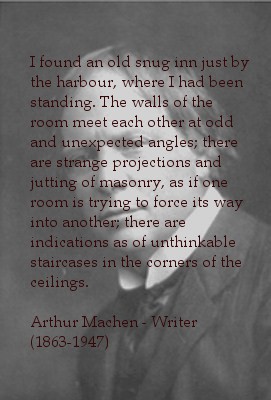Yesterday se’nnight The Fawn, smuggling lugger, with a thousand ankers of rum, brandy and geneva, to the amount of 6000 gallons, was taken and sent into Whitby, by the Eagle cutter, Captain George Whitegead, in the service of the revenue of that port; with the assistance of the Mermaid, Captain Carr. The Fawn is a fine clinch built vessel of 90 tonnes built at Flushing four months since, mounting six four pounders and six swivels. Her crew consisted of twenty two men. The Whitby Times, 31st August 1790
 Britain’s varied coastline has a long history of accommodating the enigmatic figure of the smuggler and his illicit trade. History shows that the golden age of smuggling began in the 18th century and continued on into the early part of the 19th century. The probable cause of this proliferation was the introduction of a new tax called excise, which combined with the already existing customs tax was used by consecutive governments as a means to fund the spiralling costs of Britain’s wars in Europe.
Britain’s varied coastline has a long history of accommodating the enigmatic figure of the smuggler and his illicit trade. History shows that the golden age of smuggling began in the 18th century and continued on into the early part of the 19th century. The probable cause of this proliferation was the introduction of a new tax called excise, which combined with the already existing customs tax was used by consecutive governments as a means to fund the spiralling costs of Britain’s wars in Europe.Hidden away in the remote recesses of the North Yorkshire coastline, Whitby with it’s cosseted natural harbour and dark labyrinthine network of Ghauts, Ginnels and Yards seemed perfectly placed to play an active part in these acts of ’free trade’. And with rumours of an underground tunnel system existing beneath the town, the profiteers would easily have been able to secure their ill gotten gains safely, away from the prying eyes of the government’s ’Preventative Men’.
The romantic image of the smuggler as free spirited opportunist belong solely within the confines novels and fictionalised accounts. The truth of the matter was that at sometime or other the majority of the population found in sea side towns up and down the country, would have been involved in or at least benefited from this illegal trade. From the fishermen who used their boats to ferry the cargo to shore to the farm labourer who would then lug the smuggled items inland.
In Whitby, when a cart laden with smuggled kegs crossed the moors, it was usual to have one keg at the back of the cart ’ with a quill in it’, and passers-by were cordially invited to sample the contents of the keg, a convenient method of persuading them to keep their mouths shut. When the cart approached it’s final destination, the quill was withdrawn and the keg properly spiked. Extract taken from ‘Whitby Lore and Legend’ By Shaw Jeffrey

Even the men sent to stop these illicit actives could find themselves embroiled in the trade:-
Captain Harold Hutchinson of the Dragoon Guards based in Guisborough was called out to attend what turned out to be a riot of a battle on Whitby’s quayside in the late 1700’s. The Dragoons after quelling the disturbance ended up being ordered to stay in Whitby for three years, enforcing the law as much as they could.
Captain Hutchinson was quickly made Customs Officer, and, as the story goes, managed to avail himself of certain items of contraband before they were spirited away for ’trade’. Such was the extent of his dealings; he amassed not inconsiderable wealth and was able to afford to build a fine dwelling in Skinner Street which became know as 'Harold Mansion'. It is said that success breeds success. Captain Hutchinson knew how to manipulate such a virtue.
As time went on, he turned his mansion into a bordello that was frequently patronised by visiting seamen, servicing a trade that built wealth on wealth for the Captain. Extract taken from the BBC North Yorkshire website

The bordello
It also seems that the people of Whitby had no problem with dispelling the myth of the archetypal smuggler as the following extract shows:-
We are told that during the absence of the men folk at the whale fishery their women kept the home kegs running, and they showed considerable ingenuity in their methods. It was usual for them to fasten a stout leather belt round their waists, under their garments and ’ next their shifts’, and to this belt were hung, all round, bladders of gin or brandy. Extract taken from Whitby Lore and Legend’ By Shaw Jeffrey
In all, the sea port of Whitby during the 18th century was a busy and successful centre of trade, and it seems quite possible that the illegal trafficking of goods played no small part in the town's prosperity, as it was something that any able seafarer could easily turn his hand to with what seemed a very good chance of success.
Text and photographs by RICHARD LOCKER





1 comment:
The Old Smuggler cafe on Baxtergate stands over a smuggler's tunnel leading to The Station Inn (formerly The Cutty Sark) on New Quay Road. Parts of it have been found in The Station Inn and in buildings in Loggerhead's Yard.
The demolition work involved in constructing Boot's chemist shop revealed a continuation of this tunnel heading toward the bridge.
Another tunnel which reputedly opened under the font in the chapel at the bottom of Flowergate may have been connected, as well as the known smuggler's cellar under Talbot House (formerly The Talbot Hotel) at 71 Baxtergate.
Post a Comment